How Can Sacred Sex Help My Man Last Longer?
Sheri answers the question: How Can Sacred Sex Help My Man Last Longer?
Sheri answers the question: How Can Sacred Sex Help My Man Last Longer?
Sheri answers a question during the Ask Anything about Sacred Sex Webinar: My partner is great but doesn’t like to kiss. Is that a problem?
 The Ecstatic Journey of Birth and Sex
The Ecstatic Journey of Birth and SexHere’s the straightforward (and elegant) reality: women’s sexual, emotional and reproductive structures and systems are one connected, coordinated, integrated arrangement. Sex, pregnancy, birth, orgasm, breast-feeding, bleeding (and not bleeding) — all participate in the same grand system. Science tends to break systems down into their components, in the process often overlooking the fact that the whole is much greater than the sum of the parts. It’s an approach that has its virtues, but misses the forest for the trees. While the female sexual system does depend on the contributions of muscles, hormones, nerves, psyche, energy, neurochemistry and more, it’s not just a compilation of parts. It’s a unified, brilliantly designed system, and we’re missing something important if we don’t see it in that light.
 Connected Systems
Connected SystemsIn humans, sex and reproduction, love and lust, and care and connection all overlap and interconnect. There are not three separate systems, one for pleasure, one for reproduction and one for bonding. It’s all one integrated, multi-purpose arrangement. It makes evolutionary sense that this is so. While it’s certainly possible to have unconnected, uncaring sex, we are definitely hard-wired for connection.
This is especially true for women, for whom sex is a high-risk activity. Female humans have limited reproductive opportunities, unlike males with their unending supply of sperm. Pregnancy and child-rearing are activities that require an enormous amount of time and energy. Since it takes human babies many years to become independent, and since two can raise a family more easily than one, having sex with someone you are emotionally bonded to tends to be a successful reproductive strategy.
 Sex and Birth: Joined Journeys
Sex and Birth: Joined JourneysOur culture tends to see birth and sex as unrelated activities. Not that people don’t understand that sex is what gets the baby started, but the subsequent processes—pregnancy, birth and breast-feeding—are generally seen as maternal, not sexual. This is a false dichotomy. The fact is that arousal and labor are very similar, and so are orgasm and birth. While it’s true that sex is intensely pleasurable and birth is wildly intense (and often intensely painful), both are consuming, extraordinary and powerful processes that are similar by evolutionary design, and not by coincidence.
Sex and giving birth are not just two ends of a journey: they are the same journey, an intimately connected system that follows a primal evolutionary template. Evolutionary design conservatively uses the same equipment, energy and biochemical tides in both the sex and birth experiences. Both journeys also involve similarly altered states of consciousness, with the kindred trance states choreographed by the same chemistry.
Both the first stage of labor and the process of arousal are involve surrender, release and opening. Each requires a person to go with the flow, turn inwards and become entranced. Both orgasm and the decidedly more active propulsive second part of labor involve adrenalin-mediated action.
Also, either process can get derailed by the same antagonists—fear, anxiety, and the inability to trust and to open. Yet another antagonist for both is stimulation of the analytical neocortical brain, which can cause either process to stall. Despite our generalized cultural anxiety, labor and birth have the potential to be powerful, transformative and even ecstatic experiences. Some women actually have orgasms during the birthing process!
As a practical matter, it’s useful to keep the parallels between sex and birth in mind. As a midwife with over two decades’ experience birthing babies, I can say with certainty that, to have the best possible birth experience, you should choose your birth place the same way you’d select a place to make love — where you’ll feel safe, private and undisturbed. Surround yourself with trustworthy allies and people who have faith in the innate wisdom of the natural birth process. Only when a woman feels secure can she open to the powerful tides of arousal or labor and release into orgasm, birth or ideally orgasmic birth in a flood tide of pleasure, wonder and love.

The Milky Way by Rubens
Breast-feeding is also part of women’s sexual experience, as it’s designed to be a pleasurable and even ecstatic lovefest between the sacred and intertwined dyad of mama and baby. The hormones of in-loveness and bonding are there to help us survive the exhausting demands of parenting and ensure that we nurture our offspring instead of ignoring or abandoning them, as we’d surely do if we didn’t love them madly.
All the aspects of the journey — cycles, fertility, pregnancy, arousal, orgasm, birth and breast-feeding — are part of the integral whole that is female sexuality. It is one of the tragedies of our culture that we’ve severed pregnancy, birth and breast-feeding from their messy, earthy, embodied sexual roots. To fully appreciate female sexuality, we must remember these connections, which hold true at a primordial level whether the woman in question chooses to (or is able to) reproduce or not.
Beyond that, we must also bear in mind that the integral nature of female sexuality does not begin and end with the body. The emotions are involved, too. There are not separate processes for love and lust. All these circuits are connected to and by the biggest sex organ of all, the brain. We’re hard-wired at all levels to bond, be blissful and to birth!
Sheri answers the question: Can Sacred Sex Help My Man Last Longer?
 Many people believe that sex is just something you do, no instruction required. What they don’t understand is that we’ve been learning about sex our whole lives. From how your genitals were handled during diaper changes to your first back-seat fumbles, from adolescent jokes to TV sitcoms, from textbooks to the plethora of porn—you’ve been learning about sex your whole life. You’ve absorbed innumerable lessons about your body, pleasure, relationships, power dynamics, what is and isn’t okay to talk about, suitable language, gender roles, what’s sexually appropriate, what’s hot and not, and much more. Your teachers have been your families of origin, schools (and playgrounds), places of worship, your peers and our ubiquitous entertainment and advertising culture. This is your real sex ed and it’s immensely powerful. You don’t choose to take this class; it just happens. Much of our sexuality education has been unconscious and, for the most part, unquestioned.
Many people believe that sex is just something you do, no instruction required. What they don’t understand is that we’ve been learning about sex our whole lives. From how your genitals were handled during diaper changes to your first back-seat fumbles, from adolescent jokes to TV sitcoms, from textbooks to the plethora of porn—you’ve been learning about sex your whole life. You’ve absorbed innumerable lessons about your body, pleasure, relationships, power dynamics, what is and isn’t okay to talk about, suitable language, gender roles, what’s sexually appropriate, what’s hot and not, and much more. Your teachers have been your families of origin, schools (and playgrounds), places of worship, your peers and our ubiquitous entertainment and advertising culture. This is your real sex ed and it’s immensely powerful. You don’t choose to take this class; it just happens. Much of our sexuality education has been unconscious and, for the most part, unquestioned.
A lot of people believe that when it comes to your capacity for sexual pleasure, you have to play the cards you were dealt, good, bad or indifferent—there’s not much room for improvement. People typically believe that learning sexual skills is only about improving your ability to please your partners (like learning to give great oral sex). However, many of your own sexual abilities, including your sexual responses, turn-ons, pleasure pathways and desires, are learned—and therefore amenable to conscious learning. You can learn how to get turned on more easily and in more ways, how to deepen your arousal, and how to become orgasmic (or more orgasmic, or crazy-orgasmic). More broadly, you can learn to become an expert at optimizing your own pleasure.



Lubricants make things slide and stay on the surface of your tissues. They’re wonderful for sex. They reduce friction and prevent irritation. Just as importantly, lubricants increase sensation and pleasure. While the vagina does produce its own lubrication, some women are just naturally less moist then others. Sexual arousal increases the production of natural vaginal juice, although when and how much can vary. At certain times of life, such as after menopause or after having a baby, there may be little lubrication no matter how aroused you are. I believe additional lubrication is always good since when it comes to erotic play, slipperier is better.
Moisturizers are absorbed into your tissues, improving tone, elasticity and resilience. They are particularly useful if your natural lubricating abilities are decreased such as during post-menopause, with certain medications and forms of birth control, and post-partum. If you’re going for healing your vagina, use coconut oil or other natural vaginal moisturizing products multiple times every day. Think of it as feeding your vaginal mucosa (the moist inner lining of the canal) and apply three times a day.
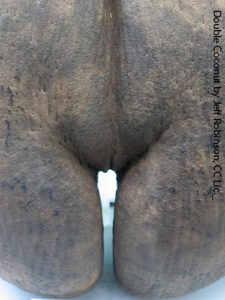
For those times in life when your vagina is dry, using additional lubricant can make the difference between pain and pleasure.
You may want to check out my Lube Rules blog post for lots more lube info.
You can use any natural plant-based oil topically as a sexual lubricant. I highly recommend using organic products.
My favorite is coconut oil, which is a natural plant oil. It smells and tastes somewhere between barely-there and delicious. I also love coconut oil because it acts as both a lubricant and a moisturizer!
Other nice body-friendly and yummy oils include almond oil, jojoba oil, sesame oil and apricot kernel oil.
Plant-oils are NOT latex-compatible. DO NOT USE WITH LATEX PRODUCTS SUCH AS LATEX CONDOMS!
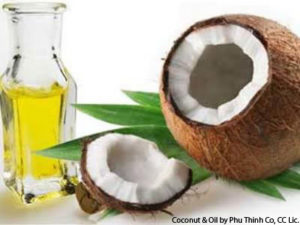 Coconut Oil
Coconut OilI like to use it straight. Just dip some out of the jar and slather it on.
Regular coconut oil is solid when cool and a liquid when warm. When it’s in its solid form, it melts deliciously at body temperature. If you want it to stay liquid at all temperatures, all the time, use fractionated coconut oil. Virgin coconut oil has a stronger coconut scent.
Coconut oil is also good for vaginas as it’s mildly anti-fungal and anti-bacterial (but only against the ‘bad’ bacteria and not the ‘good’ ones that live in a healthy vaginal ecosystem). (See Vaginal Ecology posts for more info,)
Slathering the outer parts of your genitals and using oil on anything that’s going inside is good! By using your fingers, you can get a little bit of oil inside the vagina, but not much and not far inside. So what are you going to do when the inner parts of your vagina need some extra luscious lubrication?
To make: Start with warm liquid coconut oil. If you’re adding other oils, mix them in.
Pour the oil into ice cube trays, filling each compartment about ½ way. (Or about 1/2 inch deep) Or use a small glass square or rectangular baking dish.
Put the tray in the refrigerator. Cool until just firm. Take it out and slice each cube of coconut oil into 2 or 3 sticks, about the size of your pinkie. (About 1½ inches long)
Put it back in the fridge and leave it there until it’s very solid.
Remove the suppositories from the tray. You now have coconut oil vaginal suppositories. Yay!
Put them in a jar or container and store in the refrigerator.
To use: Unless it’s roasting hot out, the suppository will stay solid for a while at room temperature, so grab a few on your way to your sex place and leave them handy so you can use as needed. When you’re ready to be lubed up internally, take one and insert it deep into your vagina.
Besides using these for sex, you can also use them to help with general vaginal dryness issues. If you’re using them that way, insert one before going to bed.
For additional healing, add any of these oils or a combination: Wheat germ oil, Vitamin E, evening primrose, borage, black current seed, comfrey, calendula, plantain, red clover.
These oils will stay liquid even when cold, so if you add too much of them, your suppositories won’t get hard. So either just add a little of these oils or make a salve.
It’s easy to make a salve: Just warm all your oils and mix. Then add a few tiny bits of melted pure beeswax or cocoa butter to your oil prior to making it hard.
A favorite herbal company, Avena Botanicals makes this Vaginal Dryness Oil, which is an easy short-cut to add to your suppositories. (They also make a lovely Yoni Creme that makes for great lubricant and can be used daily as a soothing vulvar topical.)
If you don’t want to make suppositories, here’s another option for getting creams, salves and liquids into the vagina—use an applicator.
The plastic applicators that come with many vaginal cream products will work with any cream or salve. Clean your applicator with soap and water after use and it will last forever.
You can also use a large syringe (Not the needle — just the barrel). You can buy these marketed as lube applicators at many sexuality product stores. They come with applicator nozzles and are usually marketed as anal lubricators. They work fine for getting lube in your anus as well, but since anal bacteria should never be in your vagina, I recommend not using the same applicator for your butt and your vagina, even if you do clean them well, as of course you should.
Take a little time to make suppositories or get an applicator and you’ll be glad you did. Getting the lube deep inside and coating the inner walls of your vagina will make for a very happy vagina-owner. (And, if you have visitors, they’ll be happy, too.) You’ll be slippin’ and slidin’, satisfied and slathered!
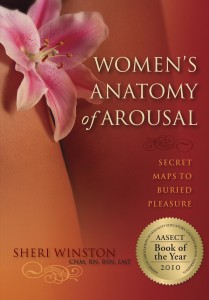 Want more info on vaginas and related parts? Check out my award-winning book, Women’s Anatomy of Arousal and/or the online course by the same name, Women’s Anatomy of Arousal Online Course to learn about all things vagina!
Want more info on vaginas and related parts? Check out my award-winning book, Women’s Anatomy of Arousal and/or the online course by the same name, Women’s Anatomy of Arousal Online Course to learn about all things vagina!
Save
I answer the question: How Can I Use Sacred Sex to Heal and Rekindle My Sex Drive?
 Check out Intimate Arts Online, our recorded virtual courses to learn at home and at your convenience!
Check out Intimate Arts Online, our recorded virtual courses to learn at home and at your convenience!
Courses include 3- 4 classes, extra resources, & delicious home play assignments!
Find out more about Intimate Arts Online here and discover just how much pleasure, satisfaction and joy you can have!
 Want to explore Sizzling Sacred Sex?
Want to explore Sizzling Sacred Sex?
‘Attend’ our recorded online course and find out What It Is & How to Have It!
Check it out here.
Sheri answers the question: Sacred Sex–I’m a Beginner; Where Do I Start?
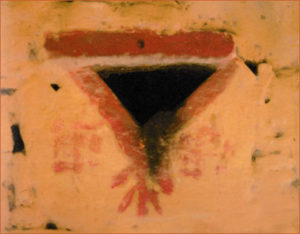 Vaginal Ecology: An Owner’s Guide to Care & Maintenance
Vaginal Ecology: An Owner’s Guide to Care & MaintenanceHere’s what you need to know about vaginal health — by understanding the ecology of your vagina you can learn to keep yours healthy, and prevent most vaginal infections and problems. Your vagina is a self-regulating, self-cleaning, resilient yet delicate ecosystem and the less you disrupt the natural balance, the better off you’ll be. This is what every vagina-owner needs to know!
The vagina isn’t just a nice place to own or visit, nor is it merely a passive space awaiting fulfillment; it’s a complex, integrated environment. Your vagina is a dynamic system with inherent safeguards in place to maintain a healthy equilibrium despite being susceptible to myriad influences that can alter its state of balance. After all, the vagina is exposed to fluctuating hormones, the consequences of our modern diet, our stress-filled lives and numerous artificial products that nature never intended our delicate tissues to withstand. And, of course, Mother Nature did intend our vaginas to have visitors whose presence and leavings can stimulate and impact our vaginal ecosystem. The vagina is well designed to handle many of these influences but sometimes succumbs to influences that cause imbalance, often leading to infection and general grumpiness all around when she’s out of commission.
Vaginal ecology is the study of the vaginal environment and its interactions. By understanding the ecology, you can better handle your vagina, and keep her happy and healthy by supporting the natural systems. When, despite your best efforts, the normal balance is disturbed and you get a vaginal infection (vaginitis), knowing how your ecosystem works can give you the power to remedy the situation and restore your environment.
A normal vagina is constantly kept moist by its slick, slippery and savory natural discharge. (I don’t like that its called discharge though — that sounds yucky — I call it vagina juice.) The smell and taste of a healthy vagina is mild, earthy and slightly pungent with a pleasant, musky aroma. It certainly doesn’t smell like fish or have a strong foul odor. A healthy vagina does not smell or taste bad! In fact, it’s full of sexy scent plus fabulous pheromones, the chemicals of attraction that we don’t consciously smell. Your vaginal juice is a naturally compelling, perfumed invitation.
Vaginal fluid mostly comes from the cells lining the walls, which act similar to sweat glands, producing moisture from the inner mucus membrane surfaces. The rest of the juice is made up of small contribution from several types of glands, located in the cervix and near the vaginal opening. Normal vaginal fluid varies in color from clear to white, although when it dries it may appear yellowish.
The amount differs from one woman to another, as well as for the same woman at different times, and ranges from scant to moderate. Some women are naturally wetter or 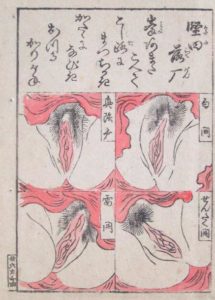 drier then others, just as some people have oily skin or dry hair or sweat more or less profusely.
drier then others, just as some people have oily skin or dry hair or sweat more or less profusely.
What’s most important for you as your vagina’s caretaker is to know what’s typical for you in amount, color, texture and odor. The vaginal fluid reflects where you are in your cycle, your age, your sexual arousal, hormonal contraceptive use, even your diet and fluid intake.
For women who are having normal fertility cycles the shifting pattern is usually similar each month. In general, most women are juiciest during the week leading up to and including the day of ovulation. Most women are driest the week before their period. Girls prior to puberty, breast-feeding moms and post-menopausal woman are drier and less varying.
A healthy vagina is full of friendly bacteria, mainly particular strains of Lactobacillus acidophilus. These good bacteria protect the vagina and keep it healthy in multiple ways. Their job is to control the population of unfriendly microbes such as yeast and ‘bad’ bacteria. They do so first by filling up the space, like a garden which is profusely filled with flowers, leaving no space for weeds. Next, the acidophilus maintain the proper vaginal environment by producing two important chemicals: lactic acid and hydrogen peroxide, a liquid form of oxygen. The lactic acid maintains an acid-alkaline balance (known as pH) in the vagina that’s acidic. Your helpful bacteria also produce hydrogen peroxide to create an aerobic (oxygenated) environment that discourages bad microbes. The beneficial bacteria are the essential hard-working engineers of the ecology of your vagina. When something causes a shift away from the ideal, they get working to bring your ecology back into line.
Check out my award-winning book, Women’s Anatomy of Arousal.
 You can also explore the online course by the same name, Women’s Anatomy of Arousal Online Course to learn about all things vagina!
You can also explore the online course by the same name, Women’s Anatomy of Arousal Online Course to learn about all things vagina!
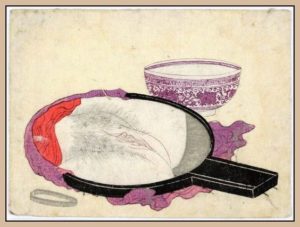 Vaginal Ecology: An Owner’s Guide to Care & Maintenance
Vaginal Ecology: An Owner’s Guide to Care & MaintenanceThere are a variety of things that can shift the vaginal equilibrium and swing the system out of harmony.
To begin with there are the regular changes of the fertility cycle. The vaginal environment normally fluctuates slightly throughout the month for women during their fertile years. Just prior to menses, there’s a normal ebb in the population of good bacteria due to hormonal influences which causes the vagina to be less acidic. This pre-menstrual week is frequently a time when the vagina is driest, most tender and more prone to irritation and infection. During your period is another time when the environment is at risk of swinging out of balance. Blood is alkaline, (the opposite of acidic) and its presence can encourage imbalance. Semen is another alkaline influence that impacts the ecosystem. Ideally, you have a strong population of good bacteria, so your body can easily accommodate these factors and shift back to an acidic state quickly.
For post-menopausal women, the vaginal environment is most like that of the cycling woman’s pre-menstrual week. In other words, it’s somewhat dry, fragile, less acidic and has lower levels of good bacteria. It pretty much stays the same all the time although internal and external environmental factors play a role. For example, frequent arousal helps to promote blood flow and keep it more moist. Avoiding vaginal environment stressors is especially important.
If your beneficial bacteria die off then your ecosystem becomes fragile and susceptible to a take-over by unfriendly bacteria or yeast. There are many influences that can induce a decline in the population of good microbes. Sometimes imbalance just seems to happen for no reason, but factors such as high stress, poor diet, misguided ‘hygiene’ practices or other influences affecting the vaginal environment are usually at work. And when you kill off all the flowers in your garden, you can be sure that the weeds will take over.
One of the most common causes of a die-off of your normal flora is taking antibiotics to treat an infection. They can kill off your ‘good guys’ as they do their job of killing off the bad ones that were causing the original infection. Anytime you take antibiotics, you are at risk for yeast overgrowth, which can result in vaginal candida (a yeast infection) and gastro-intestinal problems such as indigestion and diarrhea. This is one of the many reasons to be careful about taking antibiotics and to use them only when you really need them.
Normal vaginal discharge also contains a very small amount of natural sugars. The usual minimal level of sugar helps to discourage yeast overgrowth, while an increased level promotes it. The sugar level in the vaginal fluid is increased in diabetics and in pregnancy. Some women are sensitive to a high sugar diet and may find they need to be careful about their intake.
Although the vagina is usually pretty steamy, at or slightly above normal body temperature (which is fairly toasty at almost 100°), its best if it doesn’t get much hotter then that. Anything that creates and holds in heat can contribute to an overgrowth of yeast and lead to a vaginal infection. A wet bathing suit on a hot day, pantyhose, lycra or spandex work-out clothes, synthetic panties or leggings, plastic-backed panti-liners, even tight jeans can all create an overheated crevice, at risk of disruption. Wear cotton panties, natural fiber leggings or tights, cotton menstrual pads, and nothing at all at night (or when you can get away with it!) Keep your crotch cool and you’ll be glad you did.
Certain forms of contraception can affect the vaginal system, directly or indirectly. Any product that contains Nonoxynol 9, the chemical that’s in all spermicides can be problematic. Many women are highly sensitive to this chemical and will have inflammation as a result of its use. This includes condoms with spermicide, the jelly used with diaphragms and all other types of spermicidal creams, sponges and suppositories. It’s best to avoid this irritating sperm-killing chemical in all forms.
Hormonal birth control methods (birth control pills, the depo shot, implants, progesterone-containing IUDs, the ‘Patch’, the ‘Ring’), all work by tricking your body into thinking that its already pregnant and therefore doesn’t need to ovulate. So just like in actual pregnancy, there may be slightly higher amounts of natural sugars in your vaginal discharge, hormonal shifts and changes in the pH that may promote vaginal imbalance and infection.
Exposure to synthet ic chemicals and cleansing products can also shift the balance and cause a reduction in the supportive bacteria. Vaginal infections are commonly associated with what can be called “excessive American hygiene”, which includes the use of douche, vaginal deodorants, sprays, wipes, washes, powders, anti-bacterial soaps, deodorant soaps, body washes, bubble baths, and all of those so-called feminine hygiene products. These products are one of the main culprits in vaginal infections! Avoid them all. You do not need them! Don’t fall for the mass-marketing lies that tell you that you need to be “fresh” by using their chemical concoctions. You are fresh and delicious without that synthetic junk.
ic chemicals and cleansing products can also shift the balance and cause a reduction in the supportive bacteria. Vaginal infections are commonly associated with what can be called “excessive American hygiene”, which includes the use of douche, vaginal deodorants, sprays, wipes, washes, powders, anti-bacterial soaps, deodorant soaps, body washes, bubble baths, and all of those so-called feminine hygiene products. These products are one of the main culprits in vaginal infections! Avoid them all. You do not need them! Don’t fall for the mass-marketing lies that tell you that you need to be “fresh” by using their chemical concoctions. You are fresh and delicious without that synthetic junk.
While a healthy vagina produces it’s own luscious lubrication, the amount varies from woman to woman, and for any individual, from time to time. Arousal certainly increases the amount to some extent, which may or may not be enough. In general, I’m a big fan of using extra lubrication for sex play. Slather it on! And, be aware that there are a wide variety of products, some wonderful and some not so great for your vaginal garden.
My favorite natural lubricant is organic coconut oil. It smells and tastes great, absorbs easily into skin and mucus membranes and is naturally antimicrobial against the ‘bad guys’ while promoting the health of the friendly forces. The only significant caveat is that is not compatible with latex. If you use latex barriers, do not use coconut oil!
There are a wide variety of natural, organic water-soluble lubes for those of you using latex for protection. Keep an eye out for products containing glycerin though–for some women it seems to encourage yeast infections. Silicon lubes, while not natural, do seem to work well without disturbing the vaginal ecology. Many mainstream commercial lubricants contains all sorts of very unnatural chemicals, some of which can be disruptive to the natural vaginal balance. This is a good area for you to go natural and organic!
(For more about lubricants, read Lube Rules!)
Your healthy vagina doesn’t smell bad and doesn’t need artificial hygiene products to irritate it and kill off your normal flora. Clean with clear, clean water. That’s all you need. You can use your fingers to help rinse the crevices. A hand-held showerhead is excellent for crotch cleaning (and is also useful for self-pleasuring). A mild soap can be used on the outer areas such as the outside of the external lips but should be totally avoided on the inner lips and around the vaginal opening. There is never, ever a need to clean inside the vaginal canal at all. You have a self-cleaning vagina!
Imbalance exists before an infection is fully manifest. By knowing what’s normal for you, you can often catch a problem early before it becomes a full-blown infection. By understanding the early signs and symptoms of a shift then you have the power to swing the ecology back into a healthy direction and prevent most problems. Or, at least catch and treat an infection early.
If there is increased or profuse discharge, if it smells wrong, tastes bad, or looks odd, that’s abnormal and usually a sign of imbalance or infection. Be alert for any changes including a funny color, if your vagina juice is thicker or thinner then usual, clumpy or milky. Your vaginal juice should never itch or burn. Swelling and irritation are also warning signs of a problem. So, be sure to check your own vaginal fluid regularly, so you’ll recognize any changes early.

Now that you understand the basics of your vaginal ecology, you have the means to make good decisions to protect and care for your delicate environment. You can support your healthy system and avoid the things that might disrupt your natural defenses. By knowing what’s normal for you, and paying close attention, you can detect early signs of a problem and often fix it before it becomes a full-blown infection. When signs of imbalance occur, you can take action to correct the system yourself or get help from your health care provider, before things get really bad.
Essentially, your genitalia are a self-regulating, self-cleaning ecosystem and the less you disrupt the natural balance, the better off you’ll be. Don’t mess with a good thing. Appreciate your elegant system with its natural resilience and ability to maintain itself. Respect and support your vaginal ecology and you’ll have a happy healthy haven that feels good so you, your vagina and your friends can have lots of luscious fun!
Check out my award-winning book, Women’s Anatomy of Arousal.
 You can also explore the online course by the same name, Women’s Anatomy of Arousal Online Course to learn about all things vagina!
You can also explore the online course by the same name, Women’s Anatomy of Arousal Online Course to learn about all things vagina!
